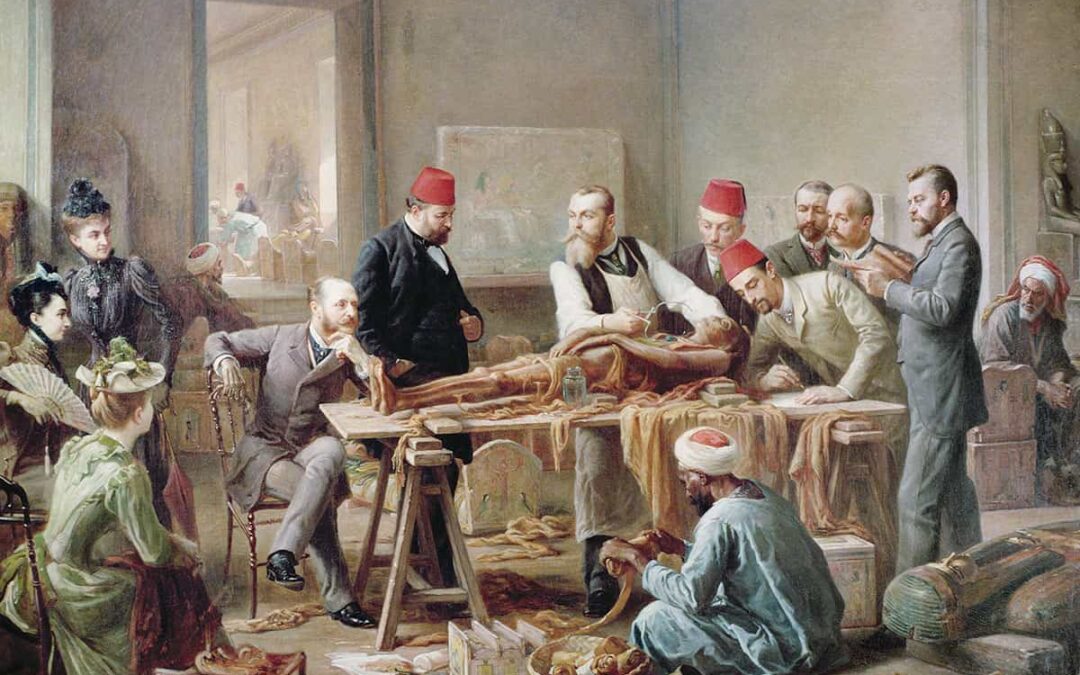Ramses II was an exceptional historical figure in every way. Known as Ramses the Great, he is considered the most prominent pharaoh of the New Kingdom, a period in which ancient Egypt experienced its golden era.
He outdid his predecessors by building more than any other Egyptian ruler, fathered a hundred children, and lived for about 90 years. If that wasn’t enough, his mummy is considered the best-preserved in the history of ancient Egypt.
A vessel for eternal life
The ancient Egyptians meticulously perfected the art of mummifying corpses, driven by their belief that preserving their bodies was crucial for attaining eternal life in the Afterlife.
The favorable climatic conditions of Egypt, coupled with the practices of mummification experts, have resulted in the discovery of naturally well-preserved bodies buried beneath the desert sand, where the dry climate impedes complete decomposition.
When archaeologists stumble upon a mummy, some claim that it appears as if they are interrupting a person’s peaceful slumber. In the case of Ramses II, who reigned at the pinnacle of the Egyptian Empire, it seems that extraordinary care was taken to ensure the preservation of this remarkable character during his mummification process.
The outcome of this meticulous preservation effort is evident today, as Ramses II’s pharaonic countenance remains petrified on his face, with even traces of his hair still intact.
The mummy displays the features of a man who lived to the age of ninety, a lifespan that tripled the average life expectancy in ancient Egypt.
Remarkably, the features have not deteriorated due to the compression of the bandages, a fate that has befallen many other mummies over time.
A traveling mummy
Even though Ramses II’s tomb was excavated in the Valley of the Kings (KV7), his mummy was relocated to safeguard it from the vandalism and looting that the tomb has endured since ancient times.
The mummy was found in a cache at Deir el-Bahari, known as the Royal Cache. It was transported from there in 1881 and unwrapped by Gaston Maspero, a French Egyptologist who held the position of archaeological authority during that time. From him, we have the initial description of the pharaoh after examining his mummy:
“The head is elongated and small in relation to the body. The upper part of the skull is completely bald. The forehead is low and narrow, with a prominent browbone. The eyebrows are very thick and gray; the eyes, small and close together; the cheekbones, very pronounced. The nose is long, thin, and hooked; the ears are widely separated from the skull and have piercings for wearing earrings. The jaw is strong and sturdy; the mouth, small but with thick lips.”
Ramses II passed away in 1213 BC, and almost 1100 years after his mummification, the level of preservation of his body is truly fascinating and could be considered the best-preserved mummy in Egypt overall.
Esteban Liagostera, an Egyptologist and founding member and general secretary of the Cultural Institute of Egyptian Studies, mentions in “Posthumous Journey to Paris of Pharaoh Ramses II” that the mummy was restored by the priests of Amun of the 21st Dynasty, more than 200 years after Ramses II’s death.
However, it required more urgent intervention when the mummy began to decompose behind the display case in which it was exhibited in the Egyptian Museum in Cairo. To prevent the “second death” of the pharaoh, a team of experts was assembled, and the mummy was transported to Paris in September 1976 to “cure” it:
“The mummy of Ramses the Great was really in a very poor state of preservation. Once the shroud that covered it was removed, cracks and fissures appeared, some of them very deep, and also several indentations. A nauseating odor clearly indicated the presence of biological infections. It was necessary to determine their gender, in order to combat them properly. The first analyzes of very small samples of skin and hair, with the electron microscope, confirmed the presence of two fearsome agents: fungi and ghoul insects.”
Currently, the mummy is on display at the National Museum of Egyptian Civilization. Ramses II was one of the 22 mummies of pharaohs and queens who were transferred to the new museum in the golden parade of the pharaohs.






